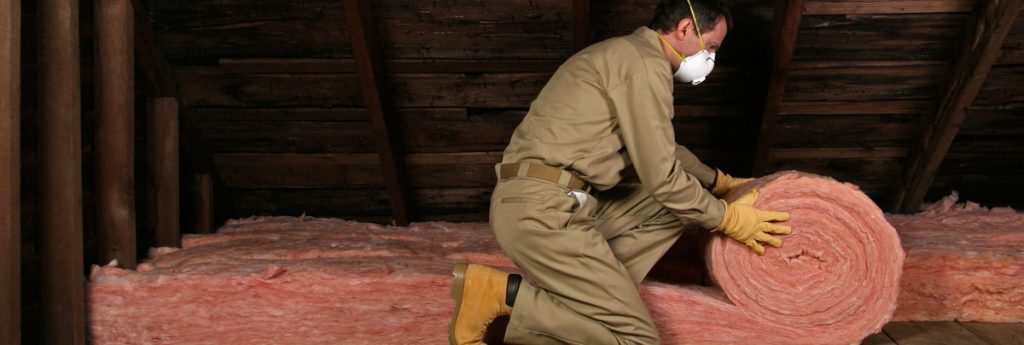It’s hard to calculate how much money is pouring through your roof when it comes to heating and cooling your home. Some experts have estimated those costs to be as high as 45 percent! If you don’t have insulation in your attic, it’s easy to lose about half of your heat or cooling, basically doubling your ac or heating bill. You can significantly reduce these costs just by adding insulation, which you can do yourself if you’re willing to get a bit dirty.
You will initially need to determine the type of insulation that will best suit you, then how much of it you’ll need. If you do already have some insulation, it’s not especially good to compress things like fiberglass or to put different materials on top of each other, such as cellulose (a blown in material) over fiberglass or vice versa. It is better to stick with corresponding materials; fiberglass on fiberglass, cellulose on cellulose, etc. Batts, a blanket type of insulation material, on the other hand, can be used with more batts or with loose-fill material like fiberglass.
If you do compress the loose-fill material, that will decrease the R-value of its insulating properties. R-value is the insulation rating for its ability to reduce the amount of heat that can escape through it, whether coming into or out of your home. A high R-value means that you are better insulated and saving money on you heating and cooling costs. The optimal R-value is between 38 and 49. Batts are approximately R-3 to R-3.8 per inch of thickness, loose-fill cellulose is R-3.13 to 3.7 per inch and loose-fill fiberglass is R-2.6 to R-3.0 per inch. You can find the R-value recommended for your region by going to:
http://www.energystar.gov/index.cfm?c=home_sealing.hm_improvement_insulation_table.
After you have decided what material works best for you and how much of it you will need, you should next figure out whether or not you will need help for this project. It is best to have some help in projects like this though for safety reasons.
Here are some safety precautions to follow:
- Wear long sleeve shirts and use gloves, eye protection, and a dust mask to avoid contact with the materials.
- Use walk boards across the ceiling joists when working in the attic.
- Make sure to pick up the boards you used so they do not damage the insulation and reduce your R-value.
- Unless you’re also an electrician, it is best to avoid working close to electrical wiring unless you have turned off the power to the home. It’s recommended that you have the wiring inspected and repaired if needed by a licensed electrician. Be cautious with spliced wires too, they should be in a junction box for safety.
- It is very important that you NOT cover any boxed or recessed light fixtures with insulation unless it has already been approved for insulation.
- Also avoid covering ventilation areas to and from the attic and roof.
- Another area to avoid covering is vent fans. The fans pull moisture which will damage the insulation and roof structure. They are supposed to be vented to outside.
- Keep all insulation inside the attic. Do not allow it to touch the underside of the roof where it can form condensation causing damage to the insulation as well as the roof decking.
- Batts, or blanket insulation, covered with paper or foil should not be used on top of existing insulation. These are vapor barriers which hold moisture against existing insulation. If you already have paper or foil insulation exposed to the attic you can just peel the facing off of the batts before you add more insulation. Be sure to take the flammable paper or foil out of your attic.
- Lastly, don’t forget to plan on insulating your attic access cover and apply self-adhesive foam sealant to the access way when you’re done with the insulation.
Call Air National for more information.
- You can get the work done professionally, usually for less than you might think.



